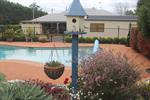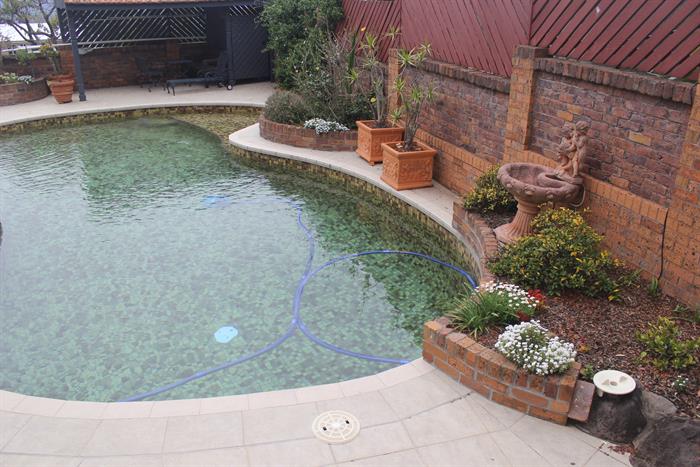
The summer is over, the pool has had months of heavy use, and now is the time to think about what needs to be done.
SHOCK TREATMENTS (SUPERCHLORINATION)
If the pool or spa water is looking green or cloudy, a shock treatment is needed to get rid of algal growth. For mild algal growth, a strong dose of chlorine is required to raise the chlorine level to 10mg/L. For heavy infestations, 30 mg/L is needed. The pump on the filter should be run for 24 hours to circulate the chlorine through the water.
Strong chlorine dosing kills most algal growth but if you have persistent algae (Black Spot algae) you should use an algaecide – see a specialist pool supplier for a suitable product for your pool.
After heavy dosing with chlorine do not enter the water for at least 48 hours as the chlorine can cause skin irritations.
Carry out chlorine treaments at night because the activity of chlorine is reduced in sunlight.
Cyanurate-based chlorine generates nitrogen that prolongs the activity of the chlorine.
STAINS ON THE BOTTOM OF THE POOL
Leaf stains: Scrub the stain with a stainless steel brush and bleach with chlorine tablets. Keep the chlorine level high for the next couple of weeks.(do not use stainless steel brushes on plastic or fibreglass as it can puncture the surface)
Algal stains: Scrub with a stainless steel brush or by water blasting. Persistent algal stains are difficult to remove – diluted hydrochloric acid may work (but use with care!).
Chemical stains (from salt treatments not mixed in properly). Scrub the affected area and bleach with chlorine.
Rust stains (from hair clips or other ferrous metal objects). Scrub with an abrasive cloth.
POOL SURROUNDS
The pool surrounds may need attention. Scrub and bleach stains on tiles surrounding the pool. Cut back overhanging foliage to give easy access around the pool and to prevent leaves, flowers, etc. dropping into the water.
You may need to jet wash paving to remove algal growth to prevent it from getting into the pool. This will also ensure that the edging is safe and not slippery to walk on.
If necessary, root-prune large shrubs and trees in the vicinity of the pool to prevent root damage to pool structure.
An incorrectly treated pool represents a serious health hazard, and because of its communal nature transmits diseases rapidly.
You should regularly buy pH and chlorine test kits from pool supply companies to certify that your pool is safe.
 POOL REPAIRS
POOL REPAIRS
Empty the pool first….
Fibreglass
The most common problems are chips and fine cracks. Small chips and cracks can easily be filled and patched. Repairs can be made by mixing resin with a catalyst and painting over a glass fibre mat that is sited over the crack.
Discolouration may be resolved by using a bleach such as Jif. Care should be taken when using abrasive liquids and cloths not to damage the surface.
Concrete
Minor surface cracks that don’t leak can be ignored or patched up. Cracks that leak must be treated by a professional.
A painted pool will need repainting every 2-3 years. It should only be drained under the builder’s supervision. The surface must be thoroughly cleaned before repainting. There are three basic types of swimming pool paint: epoxy, water-based and chlorinated rubber. The pool must always be repainted with the original paint, and left to dry for the recommended drying time.
Cracked or broken tiles should be replaced for aesthetic or safety reasons. Ensure that grouting has cured before refilling the pool with water
Over-Wintering the Pool
Don’t be tempted to turn the filter off and close down the pool over winter even though it’s not in use. It is much harder to get the water correctly adjusted next season than it is to keep up the pool maintenance during winter.
The chlorine levels should be checked regularly and adjusted if necessary, and the filter should be run regularly for a reduced time each day (2 to 3 hours). A pool cover will help keep the pool clean and reduce amount of chemical required.
TO EMPTY IT OVER WINTER OR NOT?
This is only necessary if you can’t keep up the pool maintenance over winter or if you need to remove stains and carry out structural repairs.